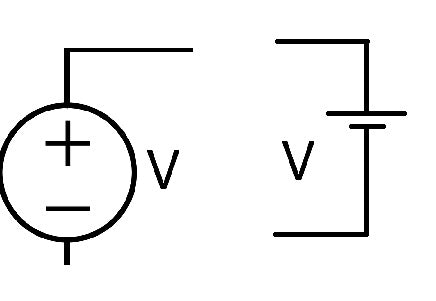
Electrical tension is an irresistible force at the heart of our modern world. It powers everything from our homes and workplaces to the many electronic devices we depend on every day. It is a concept that stimulates curiosity and is the key to understanding the mysteries of electrical energy. Demystifying the definition of electrical voltage is crucial to unraveling the mysteries of electricity and its applications. In this article, we embark on a journey to demystify the purpose of electrical voltage and explore its fundamental nature, units of measurement and importance in our lives. By clarifying this essential aspect of electrical science, we aim to provide readers with a deeper understanding of voltage and its role in shaping our electrified world.
A schematic diagram of an ideal voltage source V driving a resistor R and producing a current I

Definition of Electric Current
Tension is defined as charged objects exert force towards a higher tension, while charged objects exert pressure towards a lower tension. Therefore, normal current in a wire or resistor constantly flows from a higher voltage to a lower voltage. The current goes from the lowest voltage to the highest voltage. However, only one energy source is capable of “pushing” it against the opposite field. For example, in an electric battery, chemical reactions within the battery provide the energy necessary for current to flow from the negative terminal to the positive terminal.
Technically speaking, the electric field in a material is not the only factor in charge flow, and different materials naturally develop potential differences (Galvani potentials) in equilibrium. The electrical potential of a material is not even a precisely defined quantity, as it varies at the subatomic level. A very practical definition of “voltage” can be found in the concept of the Fermi level. In this case, the tension between two bodies is the physical work required to move a unit of charge between them. This definition makes sense because an actual measuring device measures this work and not potential differences.
The power behind electrical energy
Electrical voltage, a fundamental concept in electricity, is fundamental to understanding the essence of electrical energy. It is the driving force that drives electrons through conductors, allows electrical current to flow, and powers our modern world. Demystifying the definition of electrical voltage is essential to unravel the intricacies of electrical systems, from simple circuits to complex power networks. In this article, we embark on a journey to demystify the definition of electrical voltage and delve deeper into its fundamental nature, units of measurement and its importance in various applications. By clarifying this fundamental aspect of electricity, we aim to provide readers with a comprehensive understanding of electrical voltage and its central role in shaping our electrified world. Join us as we reveal the power behind electrical energy and explore the fascinating world of electrical voltage.
Understand the fundamentals and practical applications
Understanding the fundamentals and practical applications of electrical voltage is essential to understanding the behavior and operation of electrical systems. Voltage represents the potential difference between two points in a circuit and determines the flow of electrical current, which serves as a driving force for various devices and applications.
Basics of electrical voltage
Electrical voltage, also known as electrical potential difference, is of fundamental importance in electrical engineering and power systems. It refers to the difference in potential energy between two points in a circuit that drives the flow of current. Voltage is measured in volts (V) and represents the force that drives electrons through a conductor. It is a quantitative measure of electrical potential energy per unit charge. Understanding the basics of electrical voltage is critical to understanding the principles of electrical circuits, power systems, and a variety of electrical devices that we interact with every day.
Practical Applications of Electrical Voltage
The practical applications of electrical voltage are extensive and varied. Excitement is the driving force behind many of the technologies and innovations that shape our modern lives. The energy source activates lighting systems, powers electronic devices, and powers industrial machines. In power systems, voltage is carefully regulated to ensure efficient transmission and distribution of electrical energy. It plays a crucial role in motors, generators, transformers and various electronic components. Understanding the practical applications of electrical voltage is important for engineers, technicians, and hobbyists because it allows them to design, troubleshoot, and optimize electrical systems for optimal performance and safety.

